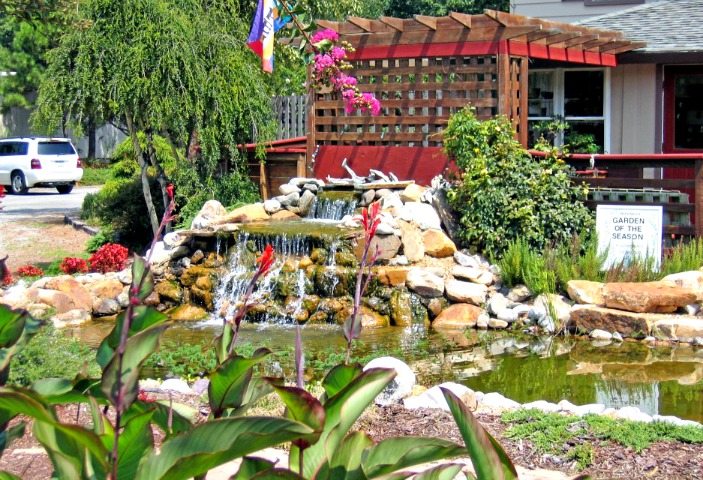Watch out for bagworms now! Odds are these pesky, destructive pests have already cocooned themselves in your conifers
by now, making most insecticides less efficient. It is one of the most destructive landscape pests and thrive on eating cypresses, arborvitaes and cedars. If you have any of these plants in your landscape, the best method of getting rid of them is – unfortunately – picking them off. If you don’t, these hard to kill pests can destroy even a mature plant within a season.
Bagworms are caterpillars that make a cocoon shaped like a diamond. They blend easily into the plant because they use its foliage in making their cocoon – another reason why they are hard to spot. These silk cocoons serve as protection from predators – AND pesticides.
Right now, the cocoons are fairly small right now (see picture). However, as they feed on the foliage – killing your plant – they grow and enlarge their cocoon. Unfortunately, they are not easily visible until August or September when they are reaching maturity. Since young caterpillars are easier to eliminate, you should apply an insecticide in no later than early June.
Non-contact products containing Bt (Bacillus thuringiensis), like Worm Whipper, have to be eaten by young caterpillars. To apply, simply spray Bt on the foliage and let the baby bagworms feed. This type of pesticide bypasses the protective cocoon and is the safest option for you and surrounding environment. However, this method does not work well on mature caterpillars. Contact insecticides like Sevin, Malathion and Orthene, while less safe for the surrounding environment, are also more effective when caterpillars are young.
By the end of August or September, bagworms are nearly invincible and your only removal option is handpicking. Once the cocoons have been picked from the trees, destroy them by burying them underground. You can also to put them in an air tight canister with a lid (i.e. empty coffee can, drink bottle) and toss them in the trash. Soaking them in a bucket with hot water and dish soap is another option.
Good luck and check your plants now!






